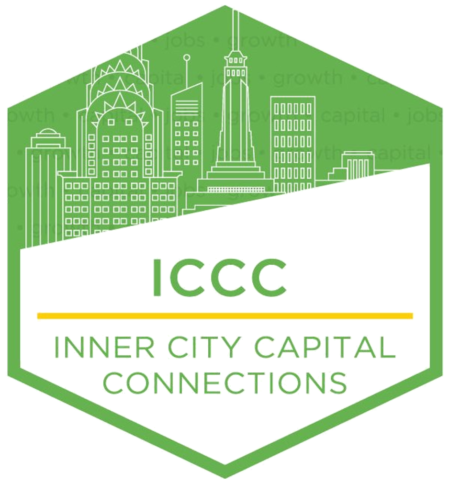
by Lauren Grattan | Apr 27, 2018 | News
Yesterday, colleagues from Business For Good San Diego and I gave public testimony at the Economic Development & Intergovernmental Relations Committee (ED&IR) of the San Diego City Council as they reviewed proposed updates to the City’s Business Incentive Program [900-12] — a policy that hasn’t changed in 17 years despite significant changes in our regional economy and our understanding of it. As noted in my comments below, we’re enthusiastic about changing this program and embracing the fantastic research that the San Diego Regional Economic Development Corporation and the Brookings Institution have been leading on creating an inclusive economy here.
While all of us at Mission Driven Finance are obviously excited about private impact investment capital’s ability to change business behavior, we want to ensure that all available tools are being used to create the society we aspire to have. Public tools like the City’s Business Incentive Program are critical to have aligned in this work advancing economic opportunity!
* * *
Hello, my name is Lauren Grattan and I’m one of the owners of Mission Driven Finance, a local impact investment firm. Through a commercial loan fund, advisory services, and hands-on technical assistance, we mobilize capital to advance economic opportunity. I am also here as a member of Business For Good San Diego.
I applaud the committee for embracing the mantra of inclusive economic development, but also want to ensure that updates to the business incentive program are made proactively and mindfully to support everyone in our local economy. This is an exciting opportunity to address the concerns raised in the city auditor’s recent report and build the right kind of policy.
However, I would like to make sure that the economic development goals in it are clear – and that the structure we put in place through the incentive program is built accordingly. As it currently stands, the mention of “inclusive economic growth” in this proposed policy comes across as mostly rhetorical. So let’s make sure the new policy creates new processes, structures, programs that make it easier to help grow the right kind of businesses.
And what are the right kind of businesses? I encourage us to think outside of our San Diego-specific “innovation economy” triad of biotech, telecom, and tourism when we define “base sector firms” that is a current requirement for this program. We have other financial programs and tools available to attract and incentivize these firms, so let’s use this program to prioritize small businesses that help us achieve our inclusive growth goals. Mr. Graham and Mr. Cafferty referenced the work of the Regional EDC and Brookings. Included in that research is that more than 90% of San Diego firms are small businesses employing half of our local workers, but the current incentives laid out are by and large not accessible to those businesses. At first glance at the materials provided, $10,000 to $100,000 to a business large enough to hire 25 people or raise $5M in one year will be a drop in the bucket of their budget and not alter their behavior.
A no-brainer that I’d like to see written clearly in the policy is a priority to outreach to & incentivize women-, minority-, and veteran-owned businesses.
And, finally, let’s aim high: let’s try to include opportunities to incentivize community-owned businesses. It’s the kind of innovation that puts cities on the map and makes them attractive to anchor institutions and residents.
In closing, I’ll just say this: if handled openly, the new city policy will have your staff meet with the right stakeholders as they build the specifics of the program. Business For Good is one of those stakeholders and we look forward to helping identify what you can do with this program so that it maximizes its impact.

by Lauren Grattan | Apr 15, 2018 | News
An interesting piece of legislation included in 2017’s Tax Cuts and Jobs Act is the Opportunity Zones program. We’ve been digging in with colleagues across the country on how this can drive investment into neighborhoods that need it.
So what’s the scoop?
The Opportunity Zones program is a once in a lifetime legislative change to the federal tax code. The goal is to incentivize investment in critically under-invested areas of the country.
- Community development program included in the Tax Cuts & Jobs Act of 2017
- Objective to encourage long-term investments in low-income communities, urban and rural, nationwide
- Individuals can defer capital gains tax by investing in approved Opportunity Funds comprised of place-based investments in designated low-income census tracts
- State Governors could nominate up to 25% of their low-income census tracts to the US Treasury Secretary for approval as Opportunity Zones by March 21, 2018
Why haven’t I heard anything about this?
Quite a number of changes were being made to the legislation simultaneously. Honestly, mostly community development nerds like us were reading and talking about this.
The New York Times has a good summary of the bigger policy context: Tucked into the tax bill, a plan to help distressed America
What is California doing about Opportunity Zones?
California created a strategy to winnow down eligible census tracts that Governor Brown could nominate to the Secretary of the Treasury. The state chose to focus on three criteria:
- Low-income census tracts
- With a minimum of 30 businesses so that there could be economic activity to support with investment
- Geographic diversity. At least two census tracts per county, with some extra weight for contiguous areas
The US Treasury approved Opportunity Zone recommendations for 18 states, including California on April 9. In San Diego, this covers a dense area from Barrio Logan and National City on the West, East along the 94 corridor to include Southeast San Diego, Oak Park, Mount Hope, and the Diamond neighborhoods, then North into City Heights, with a sprinkling in Normal Heights and North Park. Chula Vista, El Cajon, Escondido, and Vista also have small pockets designated as Opportunity Zones.
Now what?!
See where Opportunity Zones have been approved in this interactive map.
The IRS is still working on guidance for IRC 1400Z-2, including certification of Qualified Opportunity Funds and eligible investments in Qualified Opportunity Zones. Still TBD what financial structures will qualify, but they will need to deal with property/real estate.
Mission Driven Finance is exploring with partners how to support intentional investment in these communities.
Should I be worried about anything? And how do we approach this the right way?
The spirit of the law was to lift up communities that haven’t had adequate resources. However, without thoughtful approaches to investment and development, the program could also displace marginalized communities with gentrification and higher costs of living.
Some of our favorite thoughts on the matter:
UPDATE 12/4/18: We’re now publicly committing to develop an impact-first fund for small businesses in Opportunity Zones. Check it out: Mission Driven Finance is launching a Qualified Opportunity Fund.

by Lauren Grattan | Apr 10, 2018 | News
We are partnering with Kaiser Permanente San Diego to help introduce the Inner City Capital Connections (ICCC) national program to San Diego!
When: Wednesday, April 25, 2018 | 7:30 am to 9:30 am
7:30 am breakfast
8 am program
Where: Jacobs Center for Neighborhood Innovation 404 Euclid Ave, San Diego, CA 92114
Why: As a small business CEO, or leader, you may be ready to participate in the ICCC executive education and training program, leading to promoting economic prosperity in underserved communities.
The work that KP San Diego and ICCC are embarking on in San Diego aligns with Mission Driven Finance’s efforts to empower community through new models of investing in social change. Through our commercial loan fund, advisory services, and hands-on technical assistance, Mission Driven Finance mobilizes capital to advance economic opportunity. Here is some additional information about KPSD and ICCC:
Kaiser Permanente San Diego: This project aligns with Kaiser Permanente’s social mission to improve the health of the communities in which we live and serve. With that tenet, nominated businesses should not be affiliated with activities around alcohol, tobacco, firearms, or other businesses that may not be in compliance with Federal law.
Inner City Capital Connections: provides an executive education and training program with the goal of promoting economic prosperity in underserved communities. It helps established urban small businesses create and maintain sustainable growth and, in turn, create more good jobs where they are needed most. It is the country’s only program that educates inner city businesses about different forms of capital and then connects them with potential capital providers.
ICCC criteria for nominees of executive education and training program:
- Annual company revenues of $500,000 or more
- 2+ years in business
- The most important qualification is the readiness of the CEO/owner to participate in a program that will enable him/her to fully explore business growth challenges and develop strategies to enhance leadership skills, engage new business networks and prepare for a much-needed capital infusion
Please see these attachments for additional information:




